Special Terms
Bidder Terms and Conditions
We advise all bidders to read the Terms and Conditions of the Sale before bidding with Dan Morphy Auctions LLC and/or its affiliates Morphy Firearms LLC, and Morphy Auctions, Las Vegas collectively referred to below as MORPHY’S. Those who bid are bound by those Terms and Conditions of the Sale, as amended by any oral announcement, published or posted notices, which together form the contract of the sale between the successful bidder (buyer), MORPHY’S and the seller (consignor) of the lot.
TERMS OF SALE
When bidding on any lot offered by MORPHY’S, the bidder indicates acceptance of the following Terms of Sale. Any participation in the auction binds you to agreement of these terms whether or not you read or understand said terms. The Terms in writing contained herein are subject to change without notice and bidder agrees that the most recently published Terms of Sale as published or amended on the website at the beginning of the auction shall apply.
LIMITED GUARANTEE. MORPHY’S makes every effort to accurately describe all items offered in its sales. The descriptions carry a limited guarantee. It is a guarantee to protect you against major discrepancies that would have a major effect upon the value of the item. Under no circumstances do we guarantee against anything less than a major discrepancy that would have less than a major effect upon value. This limited guarantee covers authenticity, major restoration or repair not described, counterfeits, reproductions or major fabrications not disclosed in the description. Examples of what we do not guarantee against, imperfections, slight damages, handling marks, natural imperfections, undisclosed blemishes, finish differences, wood-to-metal fit issues, surface cracks or chips in wood, dings and dents, bore condition, and other similar differences that are inherent in the antiques and collectible industry. All items are sold for display purposes. If electrical, mechanical, or other working parts are inoperable, even if working at the time of sale, we are not liable due to the inherent nature of the age of these antiques and items. It is the bidder’s responsibility (present or absentee bidders) to determine by inspection by themselves or a hired professional the exact condition of each item prior to bidding on the item. Should MORPHY’S deny an authenticity issue dispute of the buyer, and the buyer is not satisfied, the buyer may, at his or her own expense, obtain the written opinion of two mutually agreed upon recognized experts in the field of the disputed item. The final decision of those experts will determine any refund consideration. This limited guarantee is only available to the buyer of record. Please also refer to POST SALE RETURN POLICY at end of terms.
Except as stated in the limited guarantee above, MORPHY’S will not be held responsible for typographical errors. Neither we nor the consignor, make any guarantees, warranties, or representation, expressed, or implied, in regard to the property or the correctness of the catalog or other description of the authenticity of authorship, physical condition, size, quality, rarity, importance, provenance, exhibition, literature or historic relevance of the property or otherwise.. It is the bidder’s responsibility to initiate contact with MORPHY’S in request for additional information regarding the items. Submit all questions regarding upcoming auction items at least 48 hours prior to the date of auction. We will make every effort to answer all submitted questions in a timely manner. We will do our best, but cannot promise that questions submitted within 48 hours of the auction date will be answered prior to the auction. The consigner and we make no representation or warranty as to whether the buyer acquires any reproduction rights in the property. All items will be available for preview approximately one (1) month prior to the auction.
TIMING. There will be no options for refunds of any type beyond 35 calendar days from the auction date. Paying late and thus receiving items late will not change the limitation on the dates above for refund consideration. Please also refer to POST SALE RETURN POLICY at end of terms.
FIREARMS – All firearms transfers will be in strict accordance with all International, Federal, State and local laws. Be sure to check your country, state and local laws before bidding. If you are unable to import, purchase or own a firearm according to your residency laws, do not bid on these items. If you bid and find out later you cannot legally own/accept delivery, the bid is still a valid contract that the buyer must pay.
• Firearms Catalog Designations
o A: antique
o M: modern (post 1898), Federal Firearms License (FFL) requirements apply
o C: curio & relic eligible
o N: National Firearms Act / Title II Gun Control Act of 1968 (Class III SOT) requirements apply
o D: Destructive Devices
o ^:Modern firearm imported from Canada, will have unassuming markings that contain required import information. Marking letters are normally 1/16" tall and just over 0.003" deep. Buyers must consider this in their bidding. Marking will not appear on antique firearms imported from Canada.
• Checkout and pickup at our location:
o The same person to whom the bidder number is registered must be the person to pick up the firearm(s) at the conclusion of the sale – Federal Law disallows anyone else from accepting the transfer.
o Modern firearms sales to non-licensed bidders who are picking up guns at our location will require the completion of a form 4473 background check.
o PA auctions only - Handgun purchases also require an additional PICS form/background check for each handgun purchased. This process to fill out forms and obtain a response may take 5-10 minutes. Any applicable state fees associated with these checks will be added to the customer’s invoice.
o NV auctions only – If you have a Conceal & Carry permit issued within the last 5 years prior to purchase, you do not need to complete the background check.
o If you are “Denied” by FBI / PICS background check you will not be able to take possession of the firearm and the firearm will be consigned to the next available firearm auction. Dealers and Individuals that bid on and win items own the items and are fully responsible for payment within terms regardless of whether the FBI / PICS approves their taking physical possession of the items. MORPHY’S will not cancel the sale due to disapproval for any reason.
o If you are appealing a “Denied” decision, we will hold the firearm only if you pay in full.
o Licensed bidders, i.e. Federal Firearms licensees or Curios & Relics license holders must present a current signed copy of their license. C&R licensee purchases must conform to the Bureau of Alcohol, Tobacco, Firearms and Explosives (BATF) C&R requirements.
• Shipping
o PA auctions only - Non-Residents of Pennsylvania may not pickup modern handguns. Any firearms shipped are legally required to be shipped to a BATF licensed FFL dealer within your state of residence for transfer and pickup. You will be responsible for all shipping and transfer costs incurred.
o NV auctions only - Non-Residents of Nevada may not pickup modern handguns.
o Modern handguns are required to be shipped via FedEx 2-Day Air.
o Modern long guns are shipped via FedEx ground to the FFL dealer.
o In preparation ahead of an auction or upon paying for the firearm you can contact a licensed dealer to send their FFL to firearms@morphyauctions.com with the paid invoice number notated.
o MORPHY’S will not be responsible for exporting modern firearms or any ammunition. Buyer may contact Borderview International Firearm Logistics or another third party provider. Borderview may be contacted prior to bidding for pricing, process and timeline information.
• National Firearms Act (NFA) Class 3 Weapons and Destructive Devices (DD) Processing
o Dealers: Buyer must provide MORPHY’S with a copy of their active FFL and either their SOT or DD license, whatever applies. Estimated time for processing and approval of the required Form 3 normally takes two months, dealer to dealer via E-File is usually less than a week.
o Individuals: Law requires a completed Form 4, or Form 5 for deactivated guns. MORPHY’S will prepare and sign the front of the applicable transfer form, and send to the individual buyer. Individual is responsible for completing requirements for fingerprints, photo, and a fee of $200 per item, as well as completing applicable portions of the reverse side of the form. Estimated time for processing and approval of Form 4 is 6-8 months.
o Dealers and Individuals that bid on and win NFA or DD items own the items and are fully responsible for payment within terms regardless of whether the BATF approves their taking physical possession of the items. MORPHY’S will not cancel the sale due to BATF disapproval for any reason.
• Long guns will only be sold to persons 18 years of age, or older. Handguns will only be sold to those persons 21 years of age, or older. Dealers are bound by these minimum age requirements.
• Since all firearms sold are “collectible” items, MORPHY’S does not test the safety or warrant functionality of these firearms. All firearm purchases should be examined by a certified gunsmith prior to shooting.
• MORPHY’S reserves the right to deny the sale of a firearm to any buyer.
GOODS MADE FROM OR CONTAINING MATERIALS FROM PROTECTED SPECIES - MORPHY’S does not accept any responsibility or liability for the sale of items containing materials from protected species or for any omission in marking or labeling goods as containing materials from protected species. Such material includes, but is not limited to, ivory from elephants and walruses, tortoise shell, crocodile skin, whalebone, rhinoceros horn, some species of coral and certain woods. Restrictions on the importation, exportation, sale, transfer, and/or possession of goods containing materials from protected species derive from international, federal, and state laws and regulations promulgated thereunder. Laws include, but are not limited to, the Convention on International Trade in Endangered Species of Flora and Fauna (CITES), the Endangered Species Act (ESA) and the Marine Mammals Protection Act (MMPA). States currently restricting trade of protected species include, but are not limited to, California, New York and New Jersey.
Prospective buyers are on notice that several countries completely prohibit importation of property made, all or in part, of protected materials. Some countries require special permits, such as a CITES permit, from the relevant regulating authority in the countries of exportation and importation as well. Potential buyers intending to import the property into another country should be familiar with the relevant customs laws and regulations prior to bidding on goods containing material from protected species. Regulations may vary as the U.S. generally prohibits importation of articles containing material(s) from species it has designated endangered or threatened if the articles are less than 100 years old, subject to certain exceptions.
It shall be the potential buyer's sole responsibility to research and satisfy the requirements of any laws and regulations that apply to the import and export of property as described in the aforementioned paragraphs. All buyers agree to comply with any and all domestic and international restrictions on the trade of protected species as a condition of the sale. Please note that the ability to obtain an export license or certificate does not ensure the ability to obtain an import license or certificate in another country, and vice versa. It is the buyer’s responsibility to obtain any export or import licenses and/or certificates as well as any other required documentation. MORPHY’S is not able to assist the buyer in attempting to obtain the appropriate licenses and/or certificates, and there is no assurance that an export license or certificate can be obtained. The inability or delay in obtaining permits, licenses or other permissions to import or export goods containing material from protected species will not constitute a basis for rescission or cancellation of the sale of said goods or the delay in payment of purchased items in accordance with these Bidder Terms and Conditions.
Grading Scale:
Near Mint Plus 97% - 100% Near Mint 90% - 96% Excellent 80% - 89% Very Good 70% - 79% Good Below 70%
BIDDING
RIGHTS & RESPONSIBILITIES
The auctioneer will determine the highest bidder. The auctioneer alone has the right to reopen the bidding of an item if deemed necessary due to a dispute. If there is a tie bid between the floor and Internet or absentee bid, the floor bid takes precedence. MORPHY’S and its representatives reserve the right to remove those attendees who impede preview and/or the auction. Title to all merchandise shall pass to the highest bidder at the fall of the auctioneer’s hammer. The buyer will then assume all risk and full responsibility of the lot purchased once ownership has changed. We recommend that you arrange insurance for your items immediately upon becoming the highest bidder. MORPHY’S is not responsible for any errors in bids, omissions of bids, or failure to execute bids and shall have no liability to any bidder for any technical or other failure associated with the internet, absentee bidding, or telephone bidding.
• ABSENTEE BIDDING - MORPHY’S will accept absentee bids if pre-authorized by mail, fax or through www.morphyauctions.com online. Absentee bidders must use the absentee bid form and clearly mark the lot number, title and maximum bid amount. Absentee bidding forms may be accessed online at www.morphyauctions.com. If there are two (2) identical bids placed on the same item, priority will be given to the first bid received. All bids must be left in increments as explained on our bid form. If a bid is “out of increment,” the auctioneer has the right to round the bid up to the next correct increment. Bidders may preview, register and place bids online through our website, www.morphyauctions.com. Absentee and online bids placed through www.morphyauctions.com will be auto charged to the credit card entered 48 hours after the end of the sale. If you wish to pay by another method please contact us within 48 hours after the sale. Seller(s) agree to allow the Auctioneer to accept and execute absentee bids in a competitive manner for potential buyers and under the MORPHY’S absentee bidding terms and conditions. During the live sale, the auctioneer will execute your absentee bid competitively up to the maximum amount you have indicated.
• ONLINE BIDDING - Online bidding through www.morphyauctions.com, Live Auctioneers, Invaluable, Proxibid, or other bidding platforms may be available; all Terms and Conditions still apply. A surcharge may be added for third party online platforms. Refer to your bidding platform of choice for the final buyer’s premium. If there is a tie bid between the internet bidding venues and the floor, the floor bid takes precedence. If a credit card has been provided to one of the online bidding platforms, MORPHY’S reserves the right to use and charge the credit card if the winning bidder has not paid via another method by the 7 day term in Payment Terms below. Due to our fast paced auctions and bids coming from floor bidders, phone bidders, internet bidders and absentee bids, the auctioneer has the final word on all item(s) sold. You (the bidder) assume the risk of winning an item online and not having the item actually sell to you. This is due to the final call of the auctioneer and the operator not being able to re-open that lot. Online bidders are fully responsible for accidental bidding as if they bid normally.
• BID RESULTS – MORPHY’S will only contact successful bidders. Please allow 24-48 hours post auction to receive your official invoice from MORPHY’S. The invoice will include item, hammer price, premium, packing and handling, shipping, insurance, and any other charges that apply. Please hold phone inquiries regarding bid success until after receiving your invoice. For verifications, MORPHY’S cannot provide winning bid information until the second business day after the auction. MORPHY’S will not provide bidder information to any outside sources.
• TELEPHONE BIDDING - Requests for phone lines must be received at least three (3) days prior to the auction date. MORPHY’S cannot guarantee phone lines but will make every attempt to accommodate those who wish to participate through that method. Phone lines are provided on a first come first served basis. Please visit www.morphyauctions.com or call 877-968-8880 to request a call from our representatives during the live auction.
BID INCREMENTS
Bid increments listed are a general guideline. Actual increments are at the auctioneer’s discretion. If a lot does not receive a bid of 50% of the low estimate, the lot will be passed by the auctioneer.
$0 - $500…$25 $500 - $1,000…$50 $1,000 - $2,000…$100 $2,000 - $5,000…$250
$5,000 - $10,000…$500 $10,000 +… Auctioneer’s discretion
RESERVES
The majority of our items are unreserved, but occasionally items may carry a moderate reserve. Please note that when a lot carries a reserve, the reserve is usually somewhere below our low estimate. In the case of a reserved item, the seller has authorized the auctioneer to bid on their behalf until the reserve price is reached.
BUYER’S PREMIUM
A 26% buyer’s premium will be added to all successful bids and is payable by the buyer as part of the total purchase cost. A 3% merchant fee is also automatically applied to all invoices but can be discounted upon payment by cash, check, money order or wire transfer that is received within 7 days from the receipt of the invoice. If the type of payment is split, invoice will reflect the 3% charge for merchant fees on the entire invoice. In addition, a surcharge will be added for certain third party online bidding platforms the bidder utilizes. Refer to your bidding platform of choice for the final buyer’s premium.
SALES TAX
Lots delivered to you, or your representative are subject to all applicable state and local taxes, unless appropriate permits are on file with MORPHY’S. Bidder agrees to pay MORPHY’S the actual amount of tax due in the event that sales tax is not properly collected due to: 1) an expired, inaccurate, or inappropriate tax certificate or declaration, 2) an incorrect interpretation of the applicable statute, 3) or any other reason. The appropriate form or certificate must be on file at and verified by MORPHY’S five days prior to Auction, or tax must be paid; only if such form or certificate is received by MORPHY’S within 4 days after the Auction can a refund of tax paid be made. Lots from different auctions may not be aggregated for sales tax purposes.
PAYMENT, INTEREST and STORAGE FEES
Any invoice totaling more than $100,000 must be paid within three (3) days. All other merchandise must be paid in full within seven (7) days of the date of the invoice. Payments can be made by going to your account online at www.morphyauctions.com, call 877-968-8880 or mail payment to: Dan Morphy Auctions LLC 2000 N Reading Rd, Denver, PA 17517. Interest will be charged on all balances not paid at the rate of 1-1/2% monthly (18% APR) effective 30 days from the invoice date. All goods not retrieved by Buyer within 30 days after the invoice date, shall be subject to a storage fee of $50 per regular sized item per month or $100 per oversized item per month. Buyer authorizes MORPHY’s to sell, at their standard commission and consignment contract terms, any goods not retrieved after a 90 day period in any manner deemed appropriate by MORPHY’s and the proceeds will be applied to any outstanding balance due from the buyer.
Absentee bids placed through www.morphyauctions.com and Proxibid.com will be auto charged to the credit card on file within 48 hours after the end of the sale. If you wish to pay by another method please contact us within 48 hours after the sale.
We accept Visa, MasterCard, Discover, American Express, personal checks, certified checks, wire transfers, money orders, and cash.
• CREDIT CARD –If a credit card is used as any form of total payment, invoice will reflect a 3% surcharge on the entire invoice. This charge is automatically added, but will be discounted if payment is received by cash, check, money order or wire transfer.
• CHECK - There will be a $30.00 service charge for returned checks. Make checks payable to: Dan Morphy Auctions LLC. MORPHY’S reserves the right to hold items paid for by personal or company check until said check clears (14 days). MORPHY’S has the right to hold all checks over $2,000. Customers who have an established successful buying history with MORPHY’S may be exempt from this requirement. We will accept a personal or company check >$2,000 from a first time buyer if you provide a Bank Letter of Credit, available on our website, www.morphyauctions.com.
• WIRE TRANSFERS – There will be a $30 charge added to all wire transfers less than $2,000. Please add this amount to your invoice total before sending a wire transfer.
In the few situations where a successful bidder does not remit payment when due, MORPHY’S will proceed with the legal steps necessary to protect its interests and will block the bidder from future auction participation.
PACKING/SHIPPING
• It is the bidder’s responsibility to take shipping, handling, and insurance costs into consideration when bidding on items.
• BIDDERS PRESENT AND TAKING ITEMS AFTER AUCTION – Since item liability transfers upon a successful bid, items paid for must be packed, transported and/or removed by the buyer at his/her own risk after the close of the sale. We recommend that you arrange insurance for your items immediately upon becoming the highest bidder. If any employee or agent of MORPHY’S shall pack or transport the merchandise, it is fully at the risk and responsibility and expense of the buyer. MORPHY’S shall not be held liable for any loss or damage that may be caused by the said agent or employee.
• ITEMS NOT PICKED UP THE DAY OF THE SALE – Packaging, shipping, and insurance on all items that MORPHY’S accepts for shipment to locations that can accept shipments will be made available as an added courtesy and at an additional cost. We recommend that you arrange insurance for your items immediately upon becoming the highest bidder. All applicable charges will be applied to the invoice. Shipping will be based on actual costs via FedEx, USPS, or other carriers required based upon the contents of the shipment. Packaging and insurance will vary in cost depending on the items on each invoice. All packages will be shipped with insurance. Standard items packed internally by MORPHY’s will ship seven to fourteen (7-14) business days after payment is received. Oversize and breakable items, which MORPHY’S will indicate on the invoice will ship based upon the buyer’s arrangement with a 3rd party shipper. MORPHY’s cannot combine standard item shipments with oversize and breakable item shipments. If any employee or agent of MORPHY’S shall pack or transport the merchandise, it is fully at the risk and responsibility and expense of the buyer. MORPHY’S shall not be held liable for any loss or damage that may be caused by the said agent or employee.
• SHIPPING TERMS - MORPHY’S will ship items to the buyer at the listed address via FedEx or other carriers, FOB Denver, Pennsylvania or FOB other auction locations. Any risk of loss or damage to the item(s) during transit via FedEx, or any other carrier, in excess of the insurance provided by or purchased from MORPHY’S, is at the risk of the buyer. Any additional insurance coverage should be purchased by the buyer through the carrier. Buyer releases MORPHY’s from any and all claims for loss or damage to any item during transit and agrees to pay all costs of defense, including attorney’s fees, for any claims brought against MORPHY’S for loss or damage occurring during transit.
• INSURANCE - Shipping insurance is automatically added, which you can decline by contacting us and providing a signed waiver of insurance form. Insurance for all 3rd party shipments must be arranged through that carrier. Insurance provided or purchased through MORPHY’s applies only to shipments to the United States and Canada. Buyers must purchase their own insurance for shipments to other countries.
• INTERNATIONAL SHIPMENTS –MORPHY’S welcomes our international customers. MOPRHY’S can provide upon request a complete process and set of recommended company contacts with whom the Buyer can work to understand the steps, timing, and cost to acquire items at auction. It shall be the potential buyer's sole responsibility to research and satisfy the requirements of any laws and regulations that apply to the import and export of property and for paying all shipping costs, customs and duties on the items. By law, MORPHY’S cannot, and will not, declare lesser values for any international purchases and all shipments will include the invoice with purchase totals including the buyer’s premium and shipping cost.
• 3RD PARTY SHIPPING OF OVERSIZE ITEMS –Buyers will need to either pick up the items personally or arrange a 3rd party shipping service for oversize items. As a general guideline, the following will indicate which packages apply, as they are of a certain weight, length, or dimensional size.
o Dimensional size is length (the longest measurement) + (height x 2) + (width x 2). For example a 36” x 36” x 12” package = 36 + (36 x2) + (12 x 2) = 132”
o USA home shipments must be less than 70 lbs. and less than 108” length and 165” dimensional size
o USA business shipments must be less than 150 lbs. and less than 108” length and less than 165” dimensional size
o International shipments must be less than 150 lbs. and less than 108” length and less than 130” dimensional size
o There may be certain shipments that meet these requirements that will still require 3rd party shipping, and we will communicate the reason in those cases.
• 3RD PARTY SHIPPING OF BREAKABLE, DELICATE, FRAGILE ITEMS
MORPHY’S reserves the right to choose items and orders that it will pack, ship, and/or insure directly using our shipping department. Those items that MORPHY’S will not ship will require that the buyer either pick up the items personally or arrange a 3rd party shipping service. Examples of items that may apply after determination by our shipping department include but are not limited to: items with neon of any type (working or non-working), all glass display cases of any size; coin-operated, arcade and vending items with fragile parts and/or glass; signs with parts or protrusions beyond the main body of the sign, oversized vases (guideline – larger than fit in a 20” x 20” x 40” box), high value lamps and glass of all sizes, high value artwork including but not limited to paintings, statuary, sculpture, figurines, dioramas, and other intricate items; and items subject to impact by moisture and known handling issues in the supply chain. Under no circumstances will MORPHY’S be responsible for shipping damage to picture frames of any kind.
• For any buyers who wish to arrange for their own shipping, MORPHY’S must be notified at least seven (7) days prior to arrival of the shipping company name, arrival date and time. Pickup must be scheduled to begin and end within our normal business hours (9am – 4pm weekdays). Buyers must arrange weekend pickups in advance with MORPHY’S staff, and additional charges may be necessary for overtime. All 3rd party shippers must arrive with a copy of the invoice.
AGREEMENT REGARDING GOVERNING LAW, VENUE, AND LEGAL RIGHTS
I hereby understand and agree that any controversy or claim arising out of or relating to MORPHY’S Bidder Terms & Conditions, which includes this provision (hereafter referred to as “Terms & Conditions”), MORPHY’S, or the breach thereof (hereafter referred to as “Claims”), shall be governed by and construed in accordance with the laws of the State of Pennsylvania, without regard to its conflict of law provisions. I hereby irrevocably submit to the personal jurisdiction of the appropriate court in Lancaster County, Pennsylvania in any action or proceeding arising out of or relating to the Claims and their enforcement, and I agree that any and all Claims must be adjudicated, heard, determined, and resolved in said court, and I hereby irrevocably waive any objection on the ground that any such action or proceeding in said court has been brought in an inconvenient forum. MORPHY’S failure to exercise or enforce any right or provision of these Terms & Conditions or any other legal rights, shall not constitute a waiver of such right or provision. Any waiver of any provision of these Terms & Conditions by MORPHY’S must be made in writing and signed by an authorized representative of MORPHY’S specifically referencing the provision(s) contained within the Terms & Conditions to be waived. Headings used in the Terms & Conditions are for convenience only and are not to be relied upon. If any provision of the Terms & Conditions is found by a court of competent jurisdiction to be invalid, the parties nevertheless agree that the court should endeavor to give effect to the parties' intentions as reflected in the provision, and the other provisions of the Terms & Conditions shall remain in full force and effect. These Terms & Conditions will inure to the benefit of, and are intended to be, enforceable by MORPHY’S, its parents, subsidiaries, affiliates, successors, assigns, members, directors, officers, and licensees. There are no third party beneficiaries to these Terms & Conditions; a person or entity who is not a party or signatory to these Terms & Conditions has no rights under the Contracts (Rights of Third Parties) Act 1999 to rely upon or enforce any term or provision of these Terms & Conditions.
POST-SALE RETURN POLICY
MORPHY’S engages knowledgeable experts to provide catalog descriptions on the merchandise we sell. Every effort is made to ensure those descriptions are accurate and that they fully disclose any exceptions to condition. Any buyer who has made their payment within the due date of 7 calendar days who wishes to report a problem must notify MORPHY’S within three calendar (3) days of receipt of their purchased item. Buyers who have not made their payment within the due date of 7 days may not return any items under any circumstances. No lots purchased by floor bidders (including those bidders acting as agents for others) may be returned. Please refer to MORPHY’S limited guarantee herein. A Return Authorization Number (RA#) must be issued by MORPHY’S before you ship anything back to our address. Any items arriving without a return authorization will not be given a refund. The item in question must be shipped with the RA# on the outside and inside of the package, with full insurance, so it arrives at MORPHY’S within one week of the aforementioned authorization.
PRIVACY
TO REVIEW OUR PRIVACY POLICY, PLEASE VISIT WWW.MORPHYAUCTIONS.COM/PRIVACY-POLICY
All rights reserved. Entire contents copyright 2018, Dan Morphy Auctions LLC. Copyright includes, but is not limited to, print media, microform and electronic media, such as CD-ROMS and online computer services.
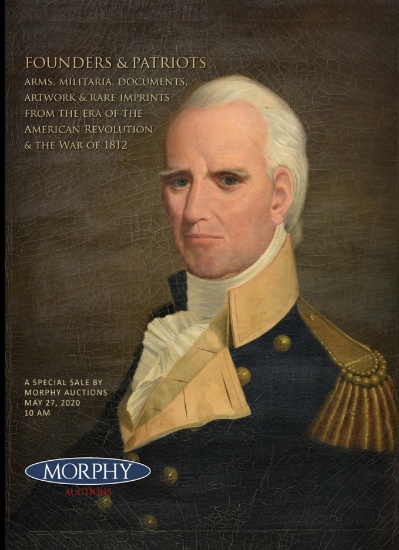


 x Cancel
x Cancel
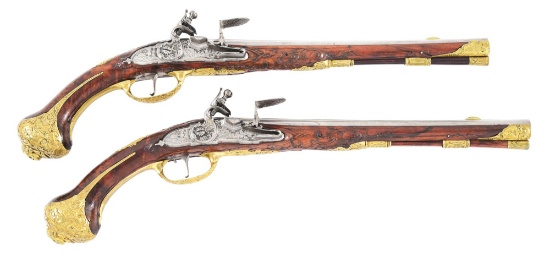

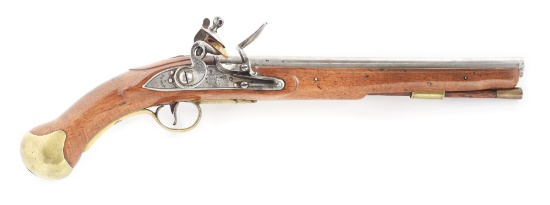













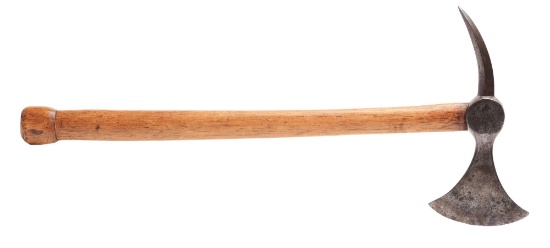

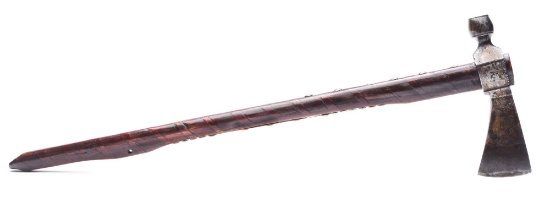

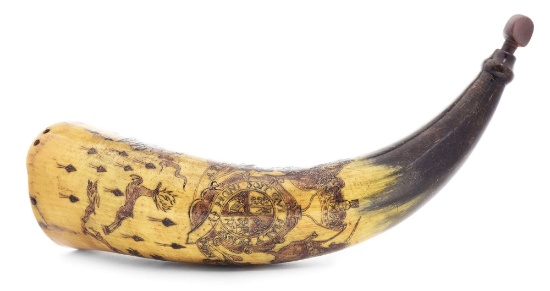
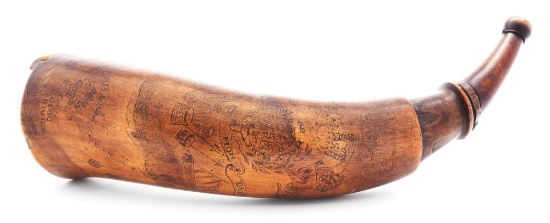
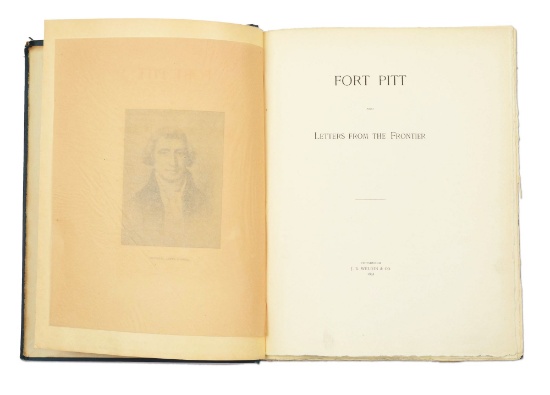
![[COLONIAL PENNSYLVANIA FRONTIER] "MEMOIRS OF MAJOR STOBO" WITH "THE OLDEN TIME" JOURNAL.](https://images.proxibid.com/AuctionImages/2849/177132/FullDetail/1025_1.jpg)